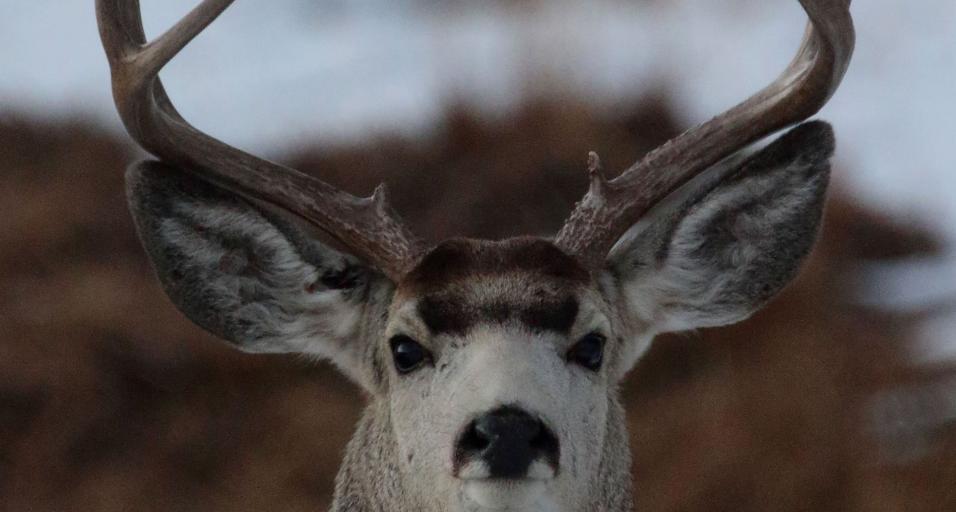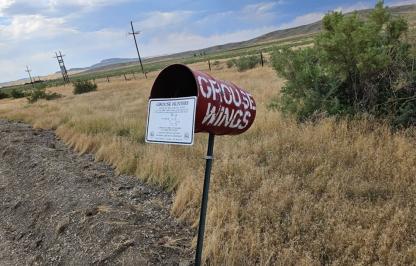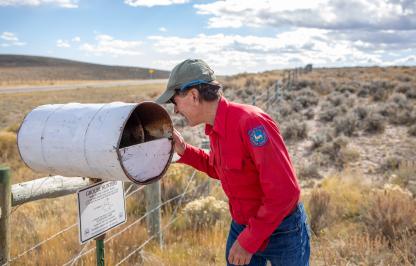With expected decreased pronghorn fawn production and known low winter survival, populations decreased throughout the region. The herds in the Rawlins area, including the Red Desert, South Ferris and portions of Beaver Rim were particularly impacted by severe winter conditions and survival rates were low.
“Early observations by field personnel indicate few fawns and pronghorn numbers in these herds are down as expected,” said Daryl Lutz, Lander region wildlife management coordinator.
Buck quality is anticipated to be similar to 2019. Hunters fortunate to have drawn a license should expect good to excellent harvest success.
Mule deer populations markedly declined last year due to harsh winter conditions.
“These conditions resulted in poor fawn survival and increased adult mortality,” Lutz said.
Antler point restrictions were reinstituted in hunt areas near Lander and Rawlins. Elsewhere, hunters will have opportunities for similar harvest success, mostly young bucks. Continued any white-tailed deer seasons are in place in the Dubois, Lander, Riverton and Jeffrey City areas. Hunters should expect similar hunting opportunities and success as last year.
Like much of Wyoming, elk populations are doing well across the region, and all herd units are near objective.
“Calf production remains on par with previous years and should result in continued robust elk numbers,” Lutz said. “Similarly, observed bull numbers remain acceptable to strong. If favorable weather conditions are realized during the fall, hunters should have excellent harvest opportunity and success.”
Moose are below desired levels in the Lander region, and the hunting season framework includes conservative quotas. However, more moose were counted in unt areas 2 and 30, and it appears this population is stable. Winter counts in the Dubois country yielded fewer moose and numbers remain at historically low levels. Overall herd performance and population size in both herd units continue to be monitored closely. Regardless, hunters fortunate enough to draw a license can expect good harvest success in the region.
Lamb production in the Whiskey Mountain bighorn sheep population was once again low at 22 lambs per 100 ewes in 2019 and continues to be a concern.
“Lamb productivity has been depressed in the herd unit for over 20 years and while it has certainly impacted population growth, there are still rams available for harvest,” Lutz said. “Those who draw a tag in these areas should expect to see fewer rams than in the past, but should experience reasonable success depending on their expectations.”
The Ferris/Seminoe herd, hunt areas 17 and 26, will be open for the eighth consecutive year in 2020. Hunters will have excellent opportunity to harvest a ram, and for those who put forth the effort have a chance to harvest an exceptional ram.
Extra dry spring and summer conditions likely have impacted upland game birds including sage, blue and ruffed grouse, pheasants, chukars and Hungarian partridge. Hunters will likely have to spend more time searching for upland game birds this fall. Early field observations of sage grouse are revealing few hens with broods.
The Sand Mesa and Ocean Lake Wildlife Habitat Management areas, and the one-day youth hunt at Sand Mesa, continues to be very popular with pheasant hunters. This year’s youth hunt is Nov. 21.
Cottontails, snowshoe hares and red squirrels appear to be similar as in 2019 with favorable conditions.




